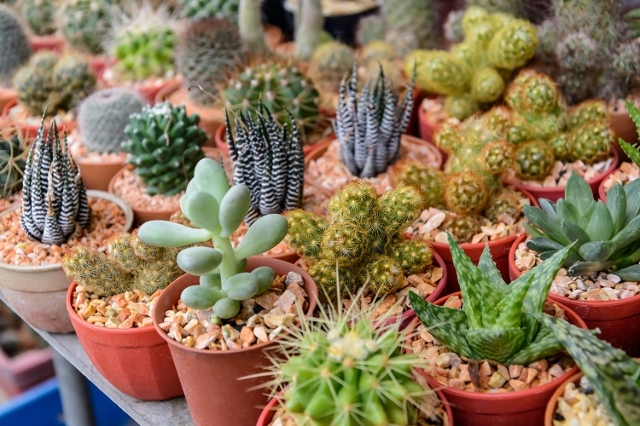Make cactuses a part of your gardening life
Residents of locales outside of this beautiful desert are often astounded when they hear details about our wonderful cactuses.
Tell them that a spiny, intimidating cactus can produce a delicate flower and watch their eyes open wide in amazement. When they hear that cactuses, like any other flowers, can become pollinated and produce a fruit, people are stunned. Suggesting that they could eat certain prickly pear (Opuntia spp.) cactus pads could be mind-boggling to someone who has never given much thought to cactuses. You can only imagine how they react to the term "edible cactus fruits."
This is odd, considering it is possible to find native prickly pear cactuses, not only in the Southwest deserts, but also in the eastern United States, where they survive the cold and damp winters. Prickly pears are hardy, and even proved to be invasive after someone introduced them to Australia as garden plants. Farmers there called the impenetrably thick stands of 20-foot-high Opuntia "green hell."
Here in the great American Southwest, growing conditions generally prevent that kind of problem. Heat, wind and the dearth of water can keep these plants in check, but do not necessarily prevent them from flowering.
After the local cactuses have finished their astounding display of floral colors (mostly yellow, but some species have deep pink), they may produce a plant part that does not look like a prickly pear pad or any cactus where the flower had been. Cactuses need to reproduce, and like most other plants, they create seeds within fruits. Yes, cactuses can create fruits, or "tunas."
If you open up a ripe tuna, you will probably see a multitude of seeds. It makes sense that a desert plant would produce a large number, given that their growing conditions are so harsh. Only a very small percentage has a chance of reaching maturity in the Mojave, or any other desert. Lack of water or soil fertility keeps their rate of survival very low. Out in the natural landscape, the amount of resources available to the developing plant is small; for this reason, seedlings must not grow faster than the environment could support.
Desert gardeners can take a chance on growing their own cactuses from seed, knowing that it is a long, slow process, although not difficult. If you have youngsters you wish to engage in a garden project, or if you enjoy a challenge, this might be something to attempt.
Permit the cactus fruit to ripen to maturity. They will be at the point of almost splitting open. Remove the fruit carefully. Kitchen tongs help save fingers from the spines. Gently scrape the seeds out and let them dry on paper towels.
The soil must be fresh and disease-free. Make sure to sterilize any that you may be reusing. Otherwise, purchase cactus soil. You can amend it with perlite for best drainage. The pots to use are your choice, as long as they are clean, with sufficient drainage holes so excess water drains away.
Place the seeds on the moistened soil surface, and keep the pots under lights. Unlike many other plants, cactus seeds need light to germinate.
Opinions about what to do next vary, depending on the expert. Recommendations include watering the pots from the bottom, but never letting them sit in water. Others suggest using a heating tray. The plant tray is a pad that raises the soil temperature just a few degrees.
You may keep the moistened pots in closed plastic bags, opening them occasionally to prevent mold. That would be a sure death for any seedling but especially a desert plant. It may take three weeks or more for seeds to germinate, but once this has happened, remove the pots from the bag, add a little more sandy soil and keep them under lights. Depending on the cactus and the growing conditions, you may have a plant for decades.
n From readers: Quite a few people around the valley have been successful growing melons in large pots or half-barrels. These and other members of the cucumber, squash family (Cucurbitaceae), thrive even in those confined spaces, as long as the soil is fertile, evenly moist and well drained.
Keeping the fruits from sitting directly on the ground or falling from the vine before they are ripe can be a problem, but gardeners have found some easy fixes for this. First, make sure that the soil has a layer of mulch, which cushions the fruit as it develops. For fruits that are appearing higher on the plant, consider cutting the legs off some old pantyhose, placing them over the squash or melon, and tying them to a trellis or other support. They are not the most beautiful addition to a garden, but they stretch and allow the fruit to come to full size safely.
Angela O'Callaghan is the Social Horticulture Specialist for University of Nevada Cooperative Extension. Contact ocallaghana@unce.unr.edu or 702-257-5581.




























